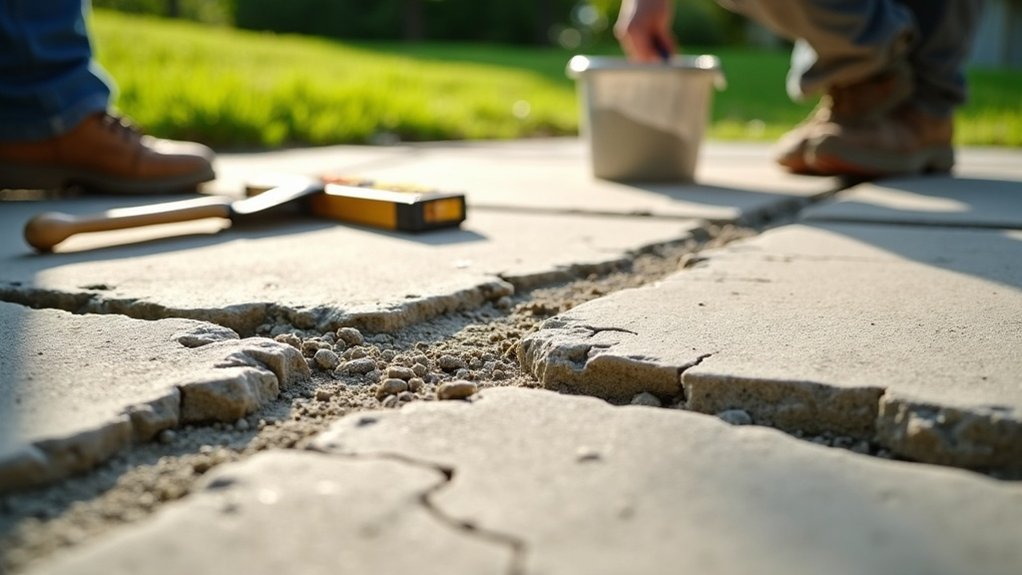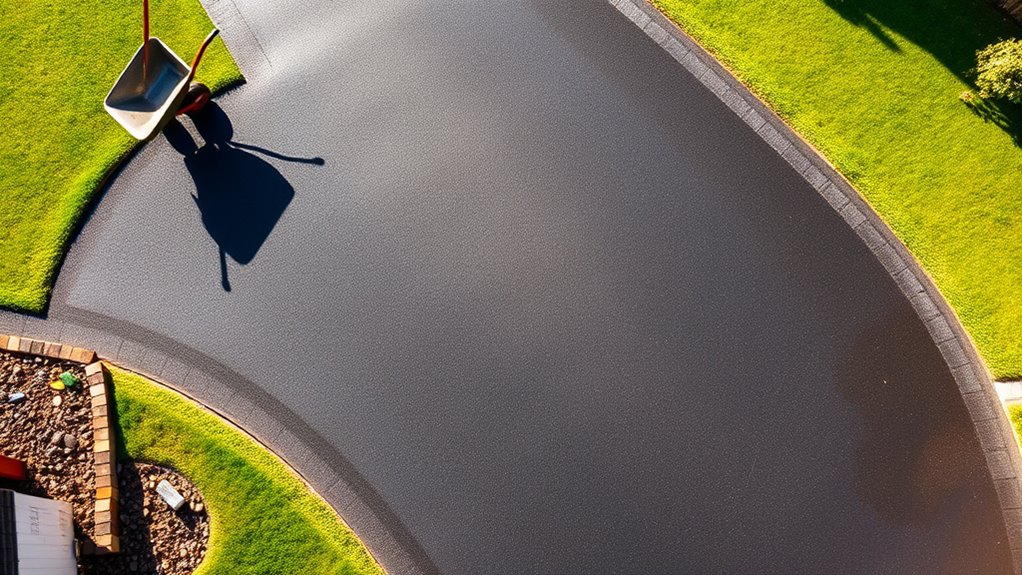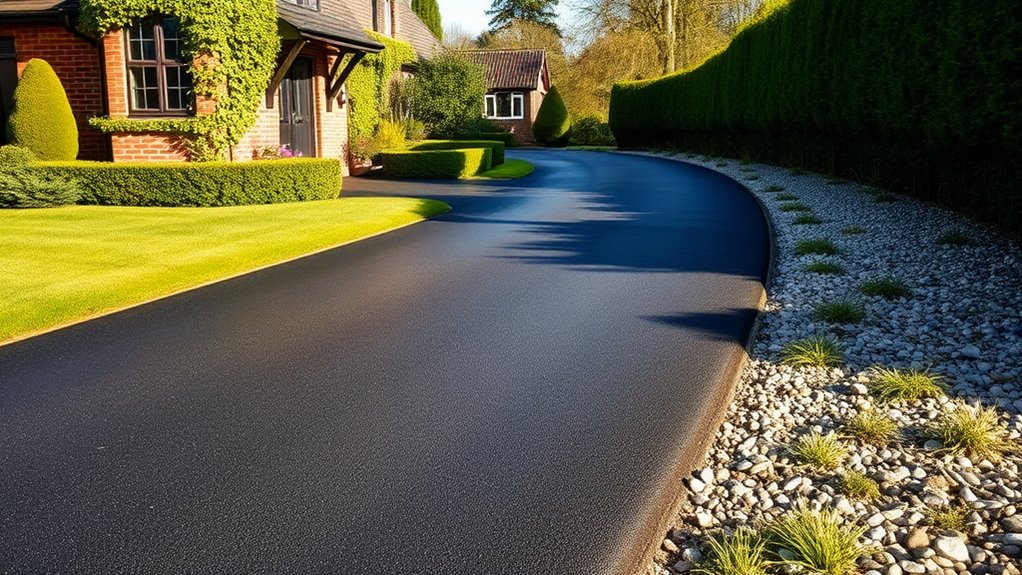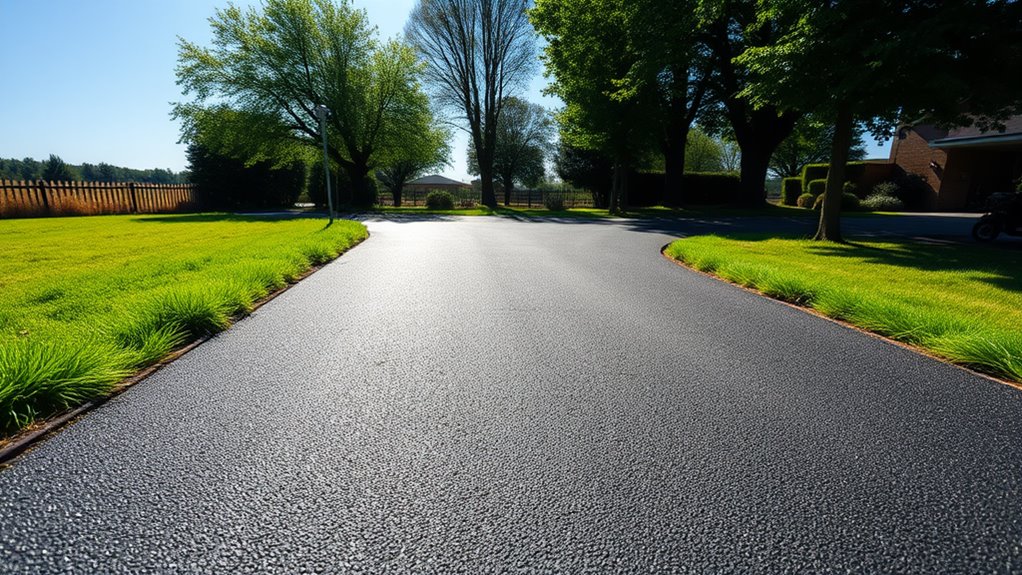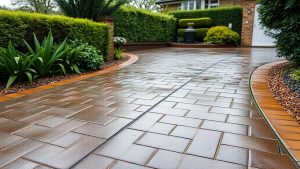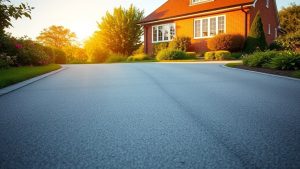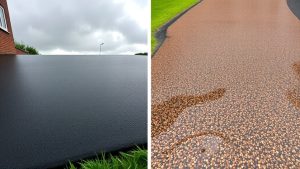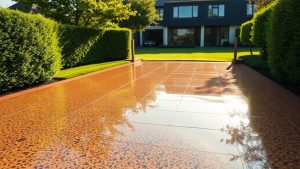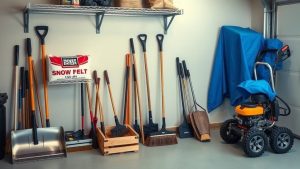To fix uneven concrete driveways, start by identifying the root causes, such as soil settlement or drainage problems. One effective method is polyjacking, which employs polyurethane foam to stabilise your driveway with minimal disruption.
Begin by checking for cracks and marking the areas needing repair. Drill injection points in the affected sections, then inject the foam to fill any voids and raise the slab. Finally, patch the holes to complete the repair. Regular maintenance will help prolong the results, keeping your driveway level for longer. More techniques and tips will follow.
Table of Contents
ToggleKey Takeaways
- Begin by inspecting for cracks and uneven areas to pinpoint where repairs are necessary.
- Select a concrete levelling method like foam levelling, mudjacking, or stone slurry grout, depending on your budget and the scale of the project.
- For polyjacking, drill small access holes, inject polyurethane foam to fill any voids, and stabilise the soil beneath the slab.
- Regular maintenance, such as power washing and sealing every two years, can extend the life of your repairs and help prevent future issues.
- Tackle any drainage problems and ensure proper soil preparation to minimise the risk of future settling and unevenness in your driveway.
Understanding the Causes of Uneven Driveways
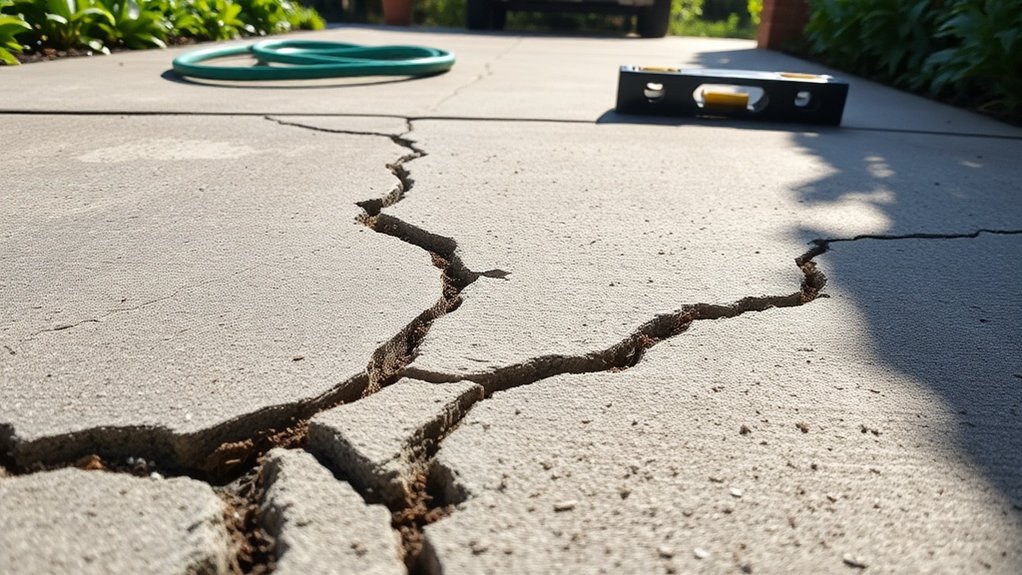
When it comes to the stability of your concrete driveway, it’s important to recognise the factors that can cause uneven surfaces.
Soil type is a key player; for instance, expansive clay can swell and shrink, putting pressure on the slab. If the soil beneath isn’t compacted properly or is loose, it may settle or create voids. Loamy soils are also susceptible to erosion. Expansive clay soils can lead to constant movement beneath the driveway, resulting in cracks and heaving.
Inadequate drainage can worsen these problems, allowing water to seep in and erode the soil, ultimately weakening the base.
Environmental factors, such as freeze-thaw cycles, can further destabilise the ground.
Finally, if proper soil preparation and compaction are overlooked during installation, it can lead to long-lasting surface issues.
Tackling these causes early on will help ensure a more stable and durable concrete driveway.
Overview of Concrete Leveling Techniques
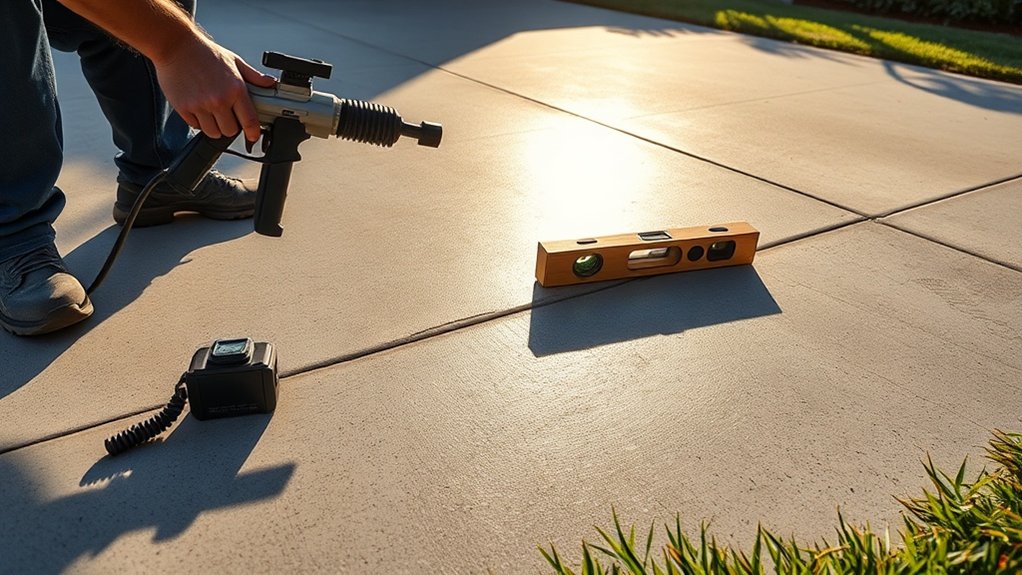
Concrete levelling techniques are vital for restoring uneven driveways. One effective method is foam levelling, or polyurethane foam injection. This approach cures quickly and causes minimal disruption on-site. The lightweight foam reduces pressure on the underlying soil, ensuring a consistent lift. Additionally, this method enhances property appearance by providing a smooth and even surface.
On the other hand, mudjacking is a more cost-effective option, but it has significant drawbacks. Its heavier mixture can compress the soil over time, leading to future settling issues.
Stone slurry grout sits between these two options, offering greater durability and a smoother finish than mudjacking, though it comes at a higher price.
Ultimately, your choice should reflect the size of the project, your budget, and your desired results. Consulting a professional can help determine the best technique for your specific needs.
Step-by-Step Guide to Polyjacking
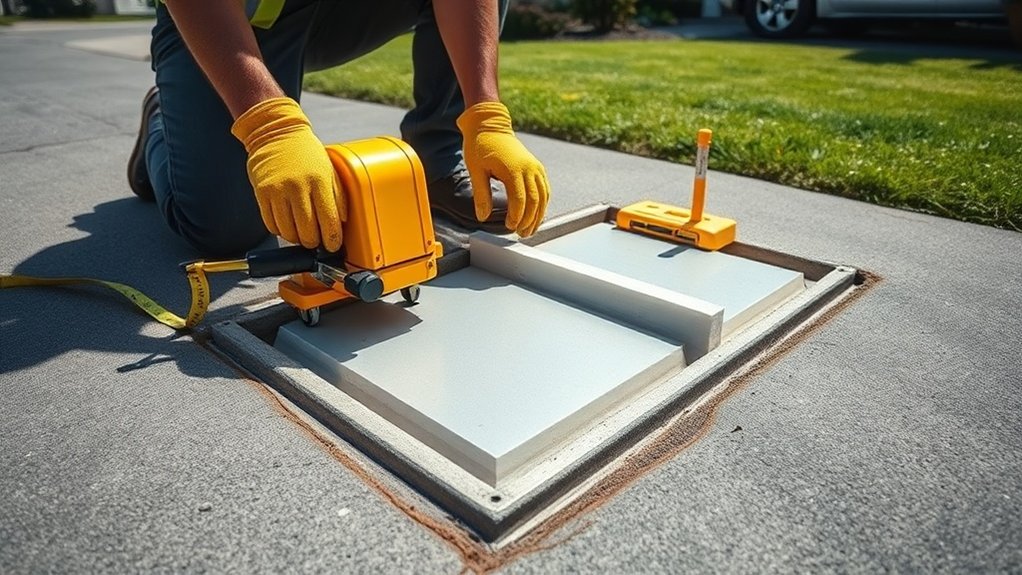
Polyjacking is an innovative method for levelling uneven driveways, involving a straightforward, step-by-step process that ensures effective results.
Start by thoroughly inspecting the area for common signs of settling, such as cracks or uneven surfaces. Once you’ve assessed the site, mark the areas that need repair and plan your drilling points.
Next, drill small access holes and insert injection ports. Inject dense polyurethane foam to fill any voids and stabilise the soil beneath the slab. Keep a close eye on the lift to ensure a level surface. This process is completed in a few hours, allowing for quick use of the driveway.
When finished, fill the holes with a matching concrete patch and tidy up the site.
The benefits of polyjacking include immediate usability and long-lasting support, making it an efficient solution for your driveway problems.
Cost Comparison of Repair Methods
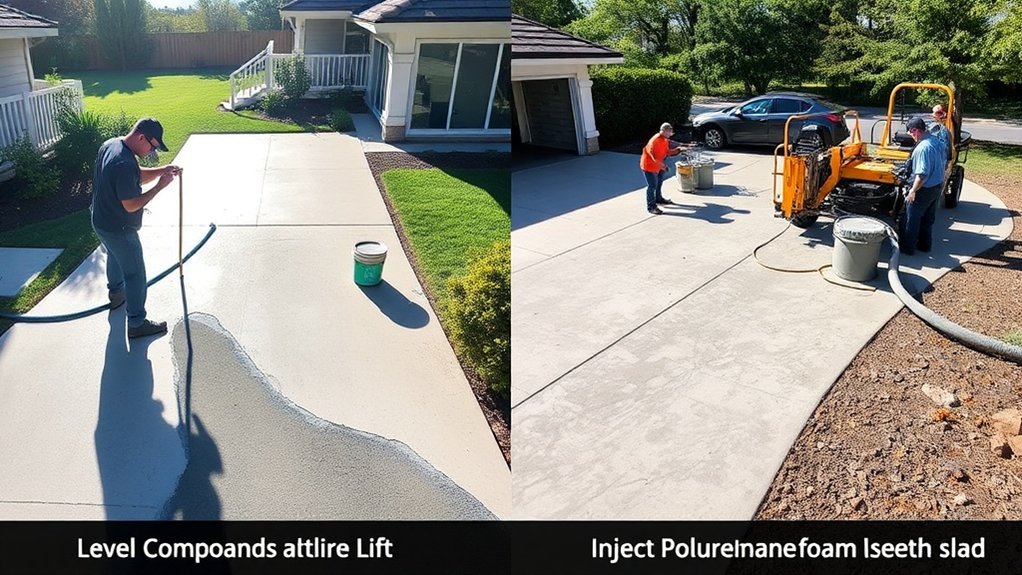
Repairing an uneven driveway can vary significantly in cost, depending on the chosen method and the extent of the damage.
For minor repairs, such as filling cracks, you can expect to pay between £130 and £520. If your driveway requires resurfacing or mudjacking, costs typically range from £1,900 to £5,000.
On the other hand, slab replacement can cost between £5 and £12 per square foot, potentially exceeding £12,000 for severe damage.
DIY repairs can be a cost-effective option, with expenses between £4 and £64, while hiring professionals can substantially increase your costs.
Ultimately, the degree of damage and the repair method selected will significantly influence your overall expenses.
Maintenance Tips for Long-Lasting Repairs
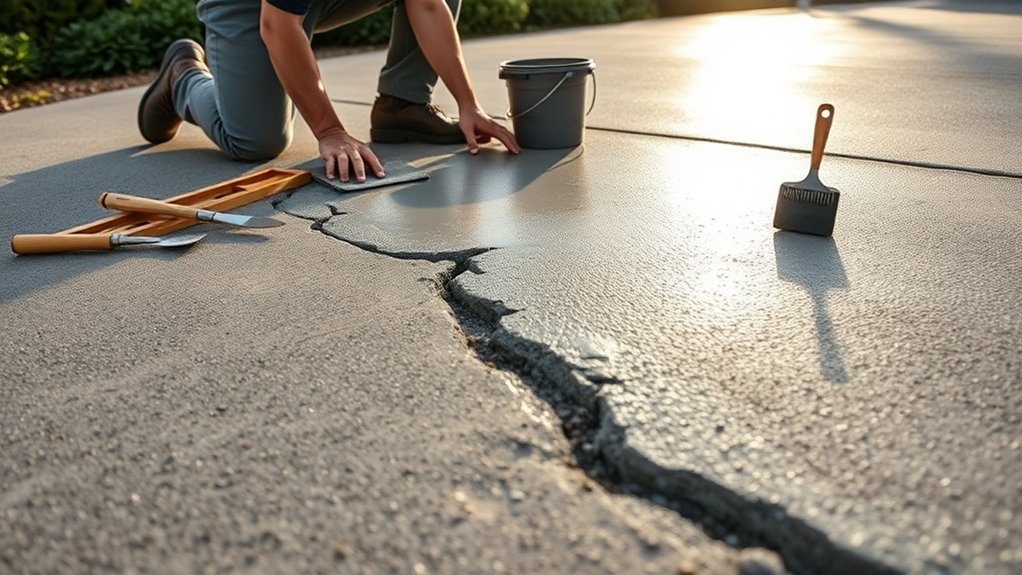
To keep your driveway in good shape after repairs, regular maintenance is crucial.
Start with seasonal upkeep: power wash it every six months to remove dirt and organic debris. Reapply a quality sealant every two years or as needed, ensuring it’s eco-friendly and applied after a 30-day curing period.
If there are spills, tackle them quickly using absorbent materials and effective cleaners to avoid permanent stains.
In winter, steer clear of de-icing chemicals during the first season; opt for sand instead.
Regularly check for cracks; fixing them promptly helps prevent water damage. Additionally, implementing regular cleaning practices can prevent harmful substance buildup that may degrade your driveway over time.
Also, be mindful of heavy vehicles and ensure proper drainage to minimise erosion.
Following these tips can significantly extend your driveway’s lifespan and performance.
Frequently Asked Questions
How Long Does Concrete Leveling Last Before Needing Repairs?
Concrete levelling generally lasts between 5 to 20 years before repairs may be necessary. However, with proper upkeep and favourable conditions, its lifespan can extend to 20 to 50 years, significantly reducing the need for repairs. For instance, regular maintenance, such as sealing cracks and keeping the surface clear of debris, can help prolong its durability.
Can I DIY Any Concrete Leveling Methods Safely?
You can try some minor DIY methods for concrete leveling safely, but always prioritise safety. Familiarise yourself with how concrete slabs behave, use the right tools, and avoid lifting heavy materials to reduce the risk of injury or causing more damage to your concrete.
What Weather Conditions Affect Concrete Leveling Processes?
“April showers bring May flowers,” but they also impact concrete levelling. Fluctuations in temperature and moisture levels significantly affect curing and stability, making it crucial to adjust timing and techniques for successful results in different weather conditions. For instance, pouring concrete during heavy rain can lead to poor adhesion, while extreme cold can slow down the curing process. It’s essential to consider these factors to ensure a durable finish.
Are There Specific Tools Required for Concrete Repairs?
Yes, specific tools are essential for concrete repairs. You’ll need trowels for smoothing, concrete floats for levelling, and mixers for a consistent blend. Equipment like screeds ensures your repairs are even and look professional.
How Can I Prevent Future Unevenness in My Driveway?
To prevent future unevenness in your driveway, take proactive measures such as ensuring proper surface drainage, maintaining correct grading, and directing water away from the area. For example, installing drains or using gravel can help manage runoff. It’s always better to be proactive than reactive.
Conclusion
In summary, fixing your uneven concrete driveway is essential for both safety and appearance. Nobody wants to risk an injury while navigating a bumpy surface, especially when guests are around. Techniques like polyjacking or mudjacking can effectively restore the surface and prevent further issues. Remember, a smooth driveway isn’t just a nice-to-have; it’s crucial for everyday use and maintaining a good impression in your neighbourhood.
How can a tarmac driveway enhance your home's appeal? Discover the key aspects of cost, installation, and maintenance in our Read more
Wondering if a tarmac driveway is the perfect fit for your home? Uncover the essential pros and cons before making Read more
Maximize the durability of your tarmac driveway by understanding the ideal weather conditions for installation—discover the secrets to perfect timing Read more

